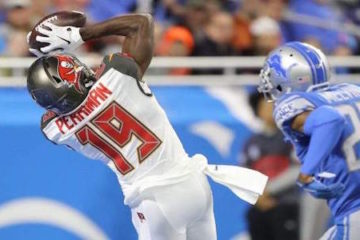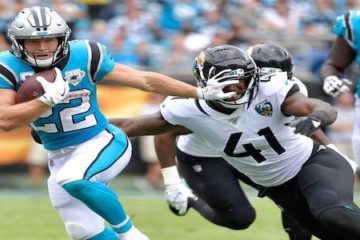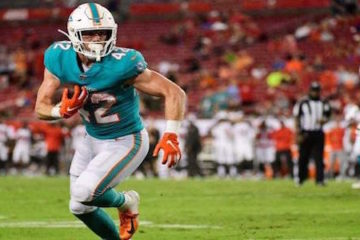Fantasy Football MarketWatch 2011 Week 6: Tim Tebow & The Free Market
Seeing as how this phrase could be considered as much common sense as it could an economic lesson, one could argue that I learned absolutely nothing in Mr. Warner’s class. However, Mr. Warner was the commissioner of the first fantasy league I ever played in, and I consider the role he played in developing my fantasy sports addiction to be far more beneficial than anything he could have taught me about the invisible hand and whatnot.
Today I’m going to be your economics teacher. Or at least I’m going to analogize fantasy football to an economic theory in order to teach you something about fantasy football. I hope, but don’t necessarily expect, to be more successful than ole’ Mr. Warner was.
Sell High
The efficient-market hypothesis (EMH) states the idea that financial markets are “informationally efficient”. In other words, the market knows everything that you do, so it’s impossible to consistently achieve returns in excess of average market returns.
There are three different forms of the EMH. The relevant form to the analogy that I promise I’ll make soon is weak-form efficiency. In weak-form efficiency, future prices cannot be predicted by analyzing prices from the past. Excess returns cannot be earned in the long run by using investment strategies based on historical share prices or other historical data.
In fantasy football, touchdowns are the equivalent of historical share prices and historical data. Using touchdowns already scored as a prediction of future success is a mistake. Touchdowns are too variable. Getting in the end zone is too dependent on factors out of the player’s control like situation and play calling to name a few. Not to mention that scoring plays make up a very small sample size. The better approach is to look at how frequently a player is used and how consistently they are able to put up yardage.
By that logic,
LeSean McCoy (Philadelphia Eagles) is a prime sell high candidate. McCoy’s seven total touchdowns account for 45% of his fantasy production this year. That’s one of the highest percentages of any RB/WR along with guys like Calvin Johnson (who I recommended selling high on in last week’s article) Beanie Wells, BenJarvis Green-Ellis, and Mike Tolbert. It’s virtually impossible that McCoy will be able to maintain this TD rate. As a result, McCoy’s value is as high as it will be. If you can swap him for a legitimate top ten player, pull the trigger. Or deal him for a package of players in order to add depth or address any weaknesses your team may have.The Free Market
I’m not exactly sure how it took me six weeks to realize that I should do a waiver wire pick up section called The Free Market. Seems kind of obvious. Oh well, better late than never. Here are some waiver wire guys to target as we head toward week 6.
Tim Tebow (Denver Broncos, 2.6% owned)
Whether Tebow is the QB that gives the Broncos the best chance to win is a discussion for other forums. And I’m sure the national media will discuss it ad nauseam. The relevant discussion for this forum is whether Tebow is a QB who gives your fantasy team the chance to win.
The answer to that inquiry is unequivocally yes. In the final three games of the 2010 season, Tebow racked up game totals of 22, 22, and 27 points as Denver’s starting QB. His ability to make plays with his legs enables him to rack up the fantasy points. If you don’t own one of the elite seven QB’s (Rodgers, Brees, Brady, Rivers, Vick, Romo, Stafford), then you should be using your #1 waiver priority to get Tebow.
Jackie Battle (Kansas City Chiefs, 0.7% owned)
Matt Cassel handed the ball off to a running back 33 times last week, and 19 of those handoffs were to Battle. What’s more is that Battle did something with his touches. He racked up 119 yards on the ground for an average of over six yards per carry, and he added a couple of receptions for 21 yards. All the scoring was done by Dwayne Bowe and Steve Breaston, but if Battle continues to get the ball at that rate, he’ll find the end zone soon enough. Maybe Battle is just the flavor of the week, but the opportunity is there for him to be a consistent producer. He’s definitely worth adding in ten-team leagues.
Jonathan Dwyer (Pittsburgh Steelers, 0.1% owned)
Dwyer is a much more speculative add than Battle, but for those of you in deeper leagues or those desperate for help at the running back position, Dwyer is worth a look. He topped 100 yards rushing with only 11 carries this week, and if Mendenhall misses anymore time, Dwyer might be the guy you want to own over Isaac Redman.
Jacoby Jones (Houston Texans, 15.4% owned)
Jones was a popular pickup last week after Andre Johnson went down with a hamstring injury. Unfortunately, he was unable to capitalize on his increased role in the offense as he hauled in just one pass for nine yards. However, Jones was targeted a team high eleven times. According to ProFootballFocus.com, Jones entered the game against Oakland with 70% career catch rate on balls thrown his way. So the 9% catch rate this week was out of character for Jones and an aberration.
Houston faces Baltimore and Tennessee the next two weeks which aren’t ideal matchups, but if Johnson misses more time, Jones will continue to be targeted fairly heavily. Odds are he won’t lay such a complete egg again.
Damian Williams (Tennessee Titans, 0.0% owned)
Since Kenny Britt went down for the season, the pecking order of Tennessee’s receiving corp has been muddled to say the least. It’s pretty much been Nate Washington and everyone else. But week 5 brought some clarity to the situation.
Again, according to ProFootballFocus.com, Williams played 62 snaps on Sunday, more than any other Tennessee receiver, including Washington. Williams also led the team in targets with eleven and hauled in six of them for 66 yards and a score. It’s possible that Williams isn’t just the next best option past Washington but the best option himself.
Who knows if this latest status quo will be maintained going forward, but it’s not often that you see a potential #1 receiver that is literally not owned in any leagues.
Jared Cook (Tennessee Titans, 7.9% owned)
Speaking of Tennessee pass catchers, Cook followed up his 93 yards and a score in week 4 with four more catches and 59 yards in week 5. He trailed only Williams in targets and recorded his highest snap total of the season with 57.
Cook seems to be starting to display some of that talent everyone was talking about during the preseason. The combination of that skill and all the opportunity he has been getting lately could potentially make Cook a top ten tight end option at some point this season.
Written by Brett Talley exclusively for thefantasyfix.com. Brett is a law student in Dallas who took most of that economic jargon off Wikipedia. Thanks Wikipedia. You can follow him and/or ask him for fantasy advice on Twitter @therealTAL.
(October 8, 2011 – Photo by Doug Pensinger/Getty Images North America)






